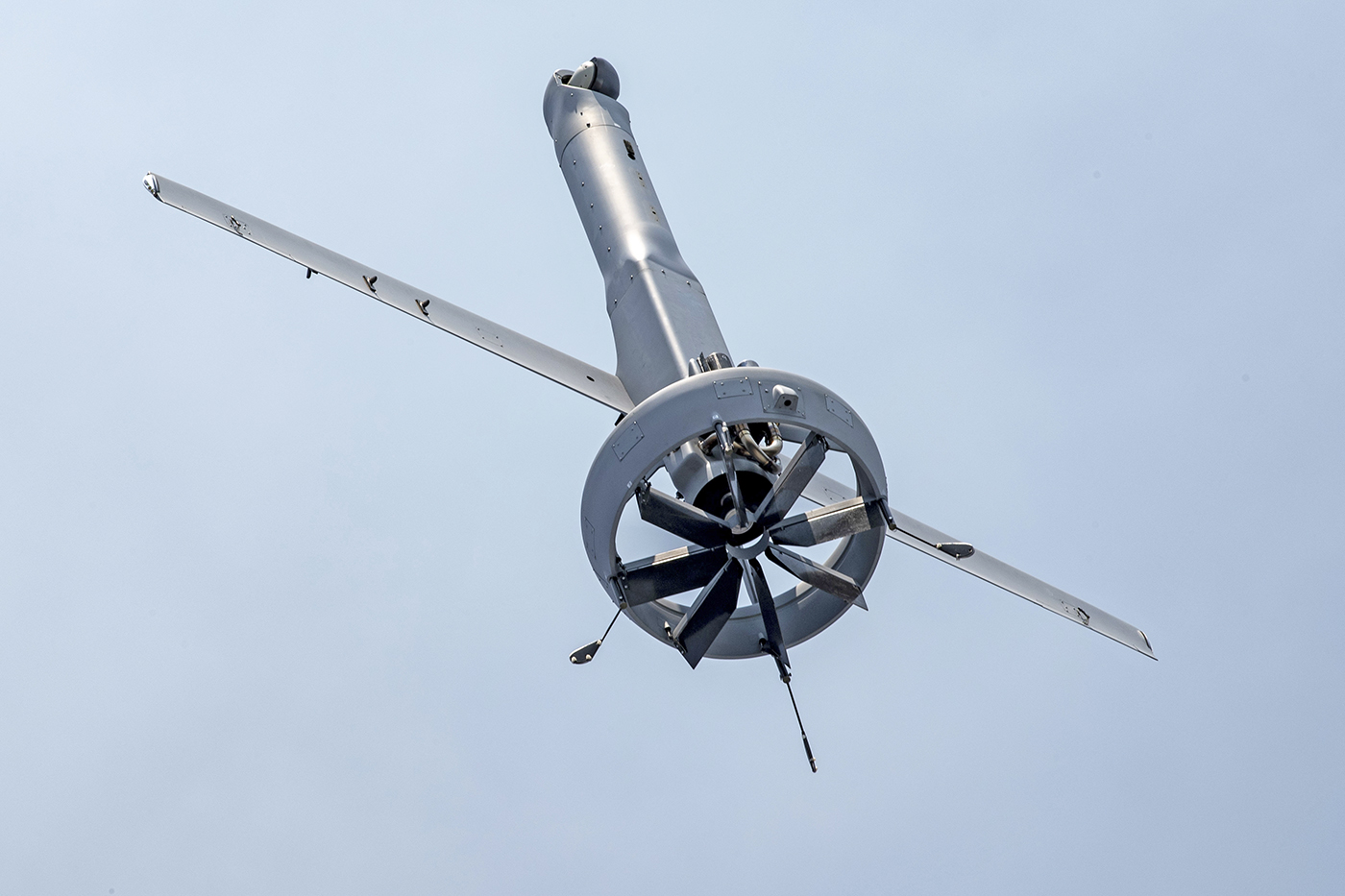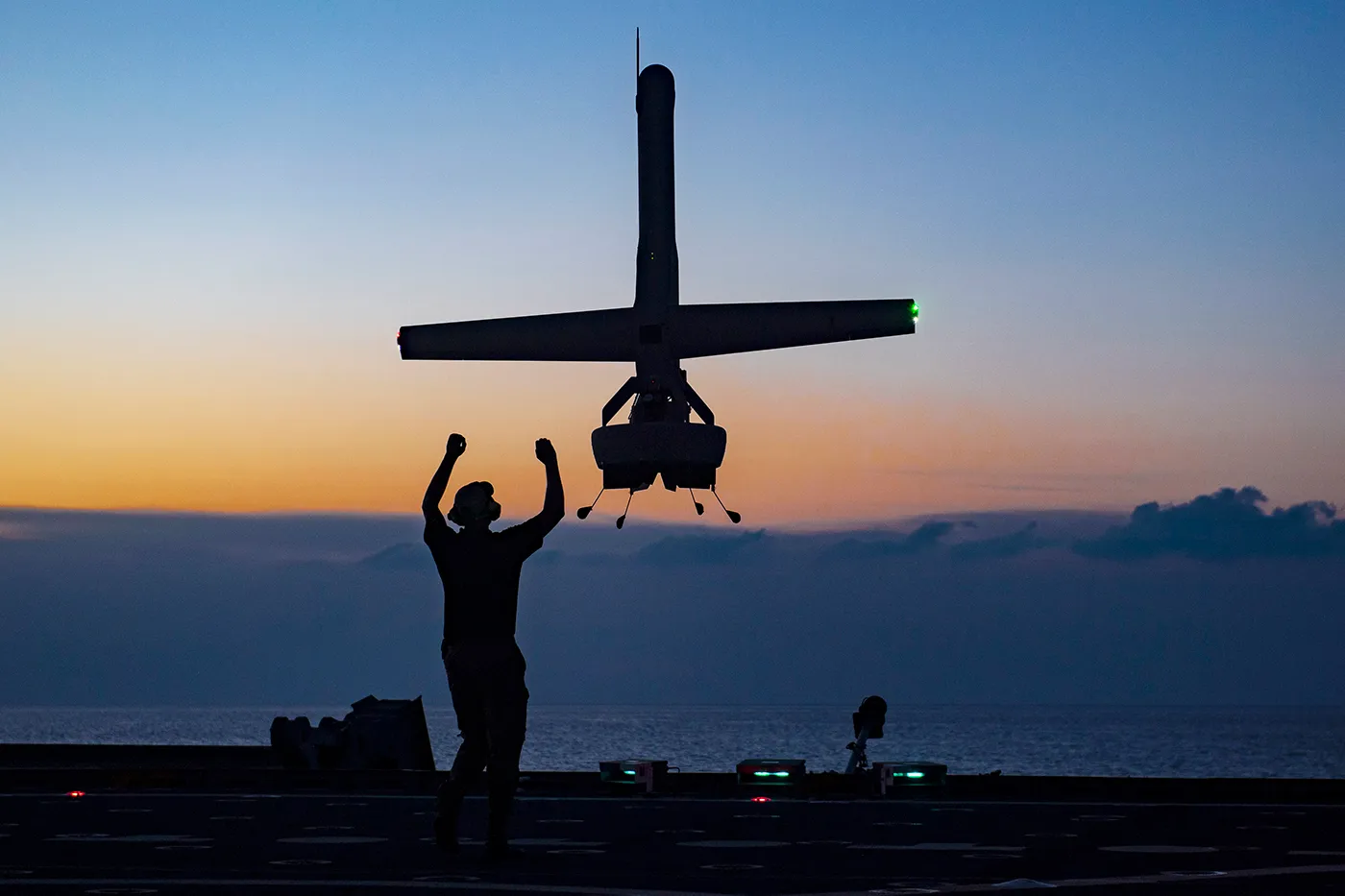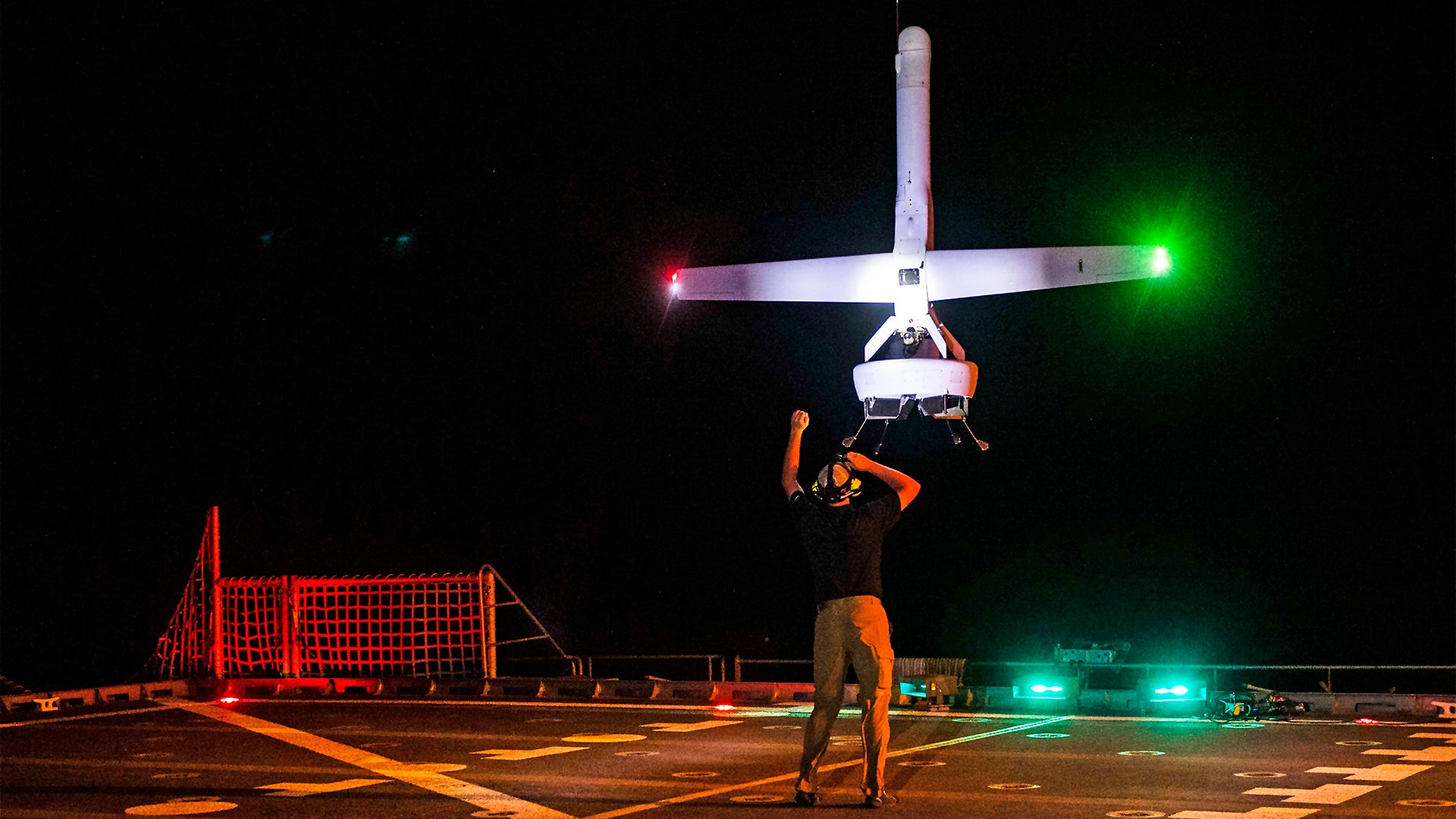The Navy sent its expeditionary fast transport ship USNS Spearhead to sea to experiment with a number of cutting-edge technologies last week, including MartinUAV’s novel V-Bat drone. V-Bat is capable of infrastructure-independent vertical takeoff and landings while also retaining the high efficiency of a fixed-wing aircraft for long-endurance missions. Seeing as it can be launched and recovered in a nine square meter area and even in dense urban terrain, as well as on the tight decks of ships, the drone could have a lot of applications in the military, law enforcement/first responder, industrial, and environmental monitoring sectors.
With a speed of up to 90 knots, it can dash to different areas quickly and it can cruise around for eight hours at 45 knots at an altitude of up to 15,000 feet. It can carry a payload of around eight pounds, which can include various multi-spectral sensor, electronic intelligence, radar, electronic warfare, and communications connectivity packages. It really is a lot of flexibility packed into a relatively small drone—V-Bat weighs just 82 pounds. It runs on a 183cc two-stroke engine that provides about 13 horsepower to its ducted-fan propulsion and control system.

The aircraft is controlled via modular line-of-sight data-link that has a connectivity range of up to 50 miles. This can be extended indefinitely across the aircraft’s entire linear range by ‘handing-off’ V-Bat to other ground control stations as it nears the edge of its line-of-sight horizon. It features a semi-autonomous laptop user interface that fits into an easily portable hard-case.

So we are talking about Scan Eagle/RQ-21 Blackjack capabilities here in many respects, albeit with a bit less endurance, but without any of the launch catapults or recovery nets needed for that system.



V-Bat is capable of autonomous launch and recovery operations and considering its tiny footprint, you really don’t need a flight deck or landing area to send it on its way or to land it. In fact, MartinUAV has demonstrated V-Bat landing in the bed of a truck while it was driving down the road. This opens up a whole host of sea-going platforms and ground units types that could leverage its persistant information, surveillance, and reconnaissance (ISR) potential.

The U.S. Army has V-Bat on its very short list of contenders to replace its RQ-7 Shadow drones. The service has a number of capabilities they want for their new small drone system, with the ability to operate independently in very austere conditions and without a runway of any kind, as well as a lower acoustic signature than the Shadow being prime requirements. Advanced evaluations at the platoon level will be ongoing into 2020, after which the Army will make its choice. The reality that future battles will likely take place in sprawling and dense urban areas the Pentagon has dubbed ‘megacities,’ V-Bat’s ability to deploy and recover in really tightly confined areas may help make its case.
In addition, it’s not like the Army and the Navy are the only services interested in V-Bat. The Marines and the Coast Guard are also eyeing the drone, too. It has demonstrated its capabilities during large allied exercises and for customers overseas, as well.

V-Bat has been serving in a limited counter-narcotics role for the U.S. Navy since at least 2016, but a far wider deployment of the capability is yet to be seen. Still, the fact that the Navy has continued to experiment with the system for years now is a good sign that they like what they see. It isn’t hard to imagine how the Navy could use the drones to do a wide variety of tasks, from providing overwatch and/or communications relay capabilities to Naval Special Warfare units, to equipping its logistics ships, or even chartered vessels with no flight deck at all, with a powerful and persistent airborne ISR capability.

If the Army adopts V-Bat as its RQ-7 successor, it will likely usher in a craze for these drones. Not only will it be a huge stamp of approval for V-Bat, but the economies of scale that a large U.S. Army acquisition would offer are unparalleled. This is especially true if the service goes beyond purchasing it for its RQ-7 units and migrates the capability to other parts of its organization, as well. As a result, the cost of V-Bat could become even more attractive to users that don’t have anywhere near Defense Department-sized budgets.
It will be really interesting to see how V-Bat’s story evolves in the coming years. By the looks of it, it could very well become one of the most important and widely-used drones in the Pentagon’s portfolio.
Contact the author: Tyler@thedrive.com
